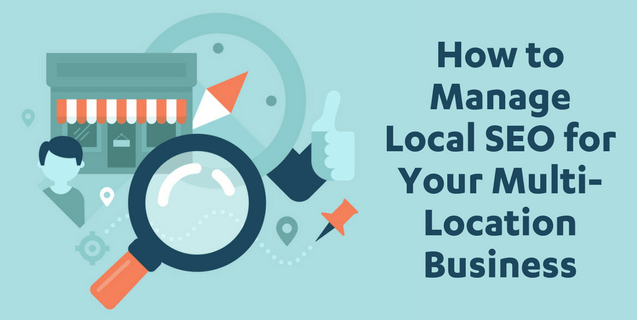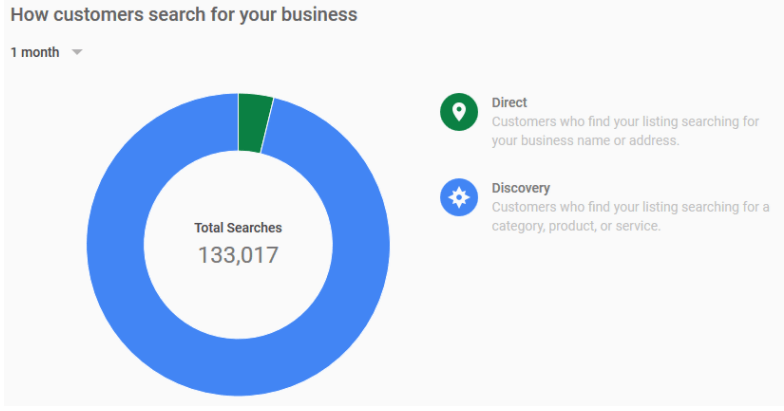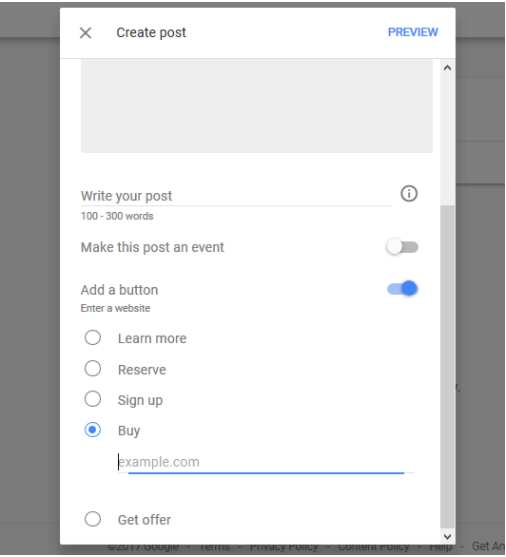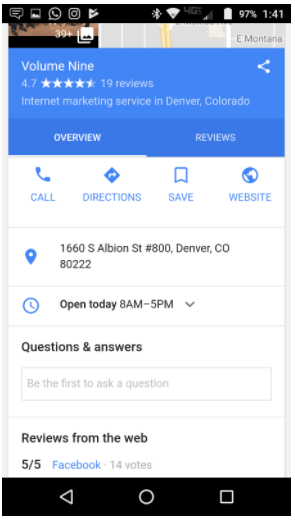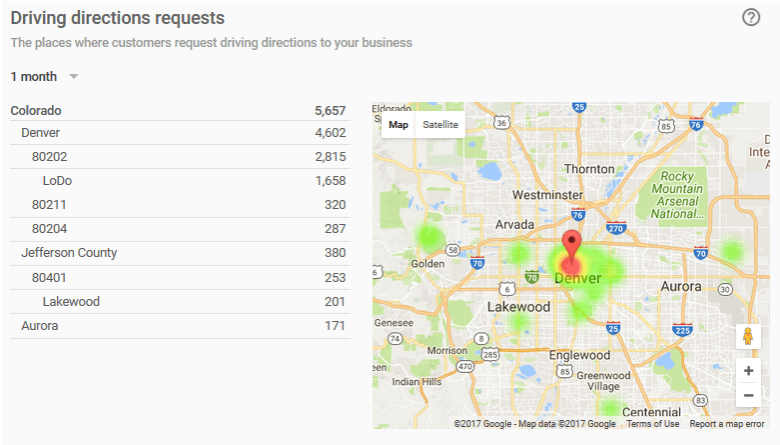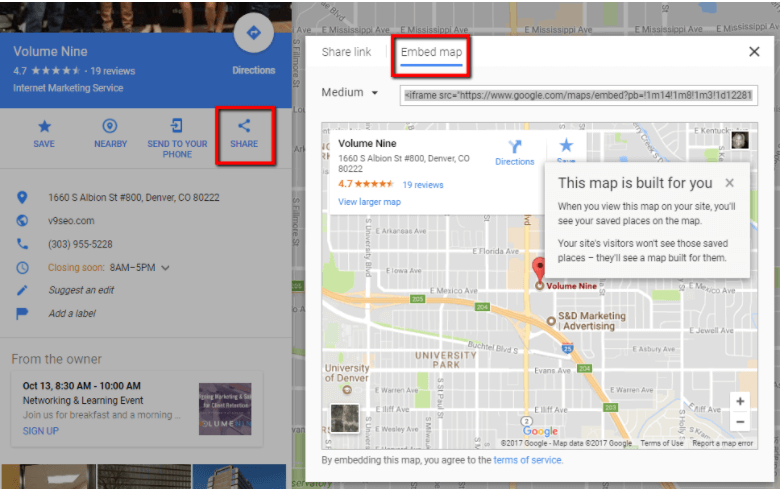Managing the online presence of a business with multiple locations will take effort to plan, execute, and maintain, but it will be time well spent. Drawing visitors to your local business as the best answer for products or services they seek online is the main goal and reward for implementing an effective Local SEO strategy.
More rewards
The rewards for performing Local SEO for multi-location businesses are highly valuable and multi-fold:
- Website traffic – highly relevant, geo-targeted traffic
- Accurate and useful information provided online to searchers, even if they don’t visit your website
- Establishes an authoritative online brand presence
- Builds strong, trustworthy signals for users and search engines
- Increases the percentage of users who are primed to purchase
Prep Time
First, cover basic on-site SEO success factors
These fundamental, yet essential, SEO elements should be in place for the overall health of your website – they affect and support Local SEO:
- Your website is indexed (verify location pages are on your sitemap!), crawlable, and has one canonical version.
- Your site is mobile-friendly – test your site pages using this Google tool and see a rendered image of how your site appears to mobile users.
- Site speed and page speed for desktop and mobile is good. Test them! Google provides info on sub-optimal site elements and optimization recommendations for both desktop and mobile.
Second, benchmark current data
You will find great value in gathering baseline data – for each location – before implementing your Local SEO strategy to track and appreciate the impact of work completed. We recommend benchmarking:
- Traffic from Google Analytics
- Sessions, Users, Pageviews, Pages / Session, Avg. Session Duration, Bounce Rate, % New Sessions
- Mobile vs. Desktop Users
- Sources of traffic and breakdown (organic, direct, paid, referral)
- Conversions – If you don’t have Goals set up in GA, now is the time to add them.
- E-commerce data in Google Analytics, if applicable to your business
- Keyword ranking data for top keywords
Multi-Location Local SEO Strategy
How to maximize the SEO impact for businesses with multiple locations
Local SEO should be a high priority for multi-location businesses that target a localized audience. Each location should be treated as a separate presence, even if they are on the same website.
Here are the elements, in order of importance, that will make the largest impact on your location-based businesses:
1) On-site Local SEO
Location Pages vs. Subdomains vs. Separate Websites
Experts recommend building one robust website that promotes your brand, all of your products or services, and your locations, with a unique page for each of your physical locations on the main site (not on a subdomain).
- Unique location pages are essential to Google and other search engines and valuable to your visitors.
- Unique pages expand the SERP ranking potential for each location.
- Having one website results in a more authoritative, legitimate brand that search engines and visitors trust.
- And bonus, you save time and money!
If you operate 2-4 locations, we recommend linking to the location page for each one from the footer on your website. If you operate 5 or more, we recommend including locations on a store locator page in your primary navigation.
Location Page URLs
Optimally, location page URLs should include the location and primary keyword. For example – https://www.yourdomain.com/locations/citykeyword
Meta Data Information
On-page tag geo-specific terms:
- Page title – include location and primary keyword
- Meta description – create a description that entices people to choose your business and include the specific location
- Header tag – include location and primary keyword
Carefully craft the title tag and meta description as they are the first introduction to your business and location in organic search results.
Site Architecture
The importance of your location pages should be reflected in the site architecture and linked to in your main navigation.
Structured Data
Add schema markup to each location page. There are multiple schemas available for Local Businesses that allow essential location information to appear in search results.
- Schema markup will guarantee Google and other search engines will crawl the location information you provide.
- Schema markup also offers additional visual impact to searchers, supporting click-through rates.
Tip: Once implemented, review each page using the Structured Data Testing Tool to ensure they are error-free.
2) Google My Business (GMB) Listing
There is a ton of valuable information in the article Google As the New Home Page – One Big Tactical Guide which explains how visible and powerful your GMB listing (and location page) setup can be when done correctly.
Google allows business owners to claim multiple business listings in one account. It is the most efficient method of claiming, optimizing, and managing your multi-location business. There are also bulk location management options that are vital to businesses with 10 or more locations.
Your GMB listings are by far the most essential and influential directory listings (citations). The information shows up in multiple places on Google (organic search result local packs, the Knowledge Panel, Maps, and Images) and has the potential to be shown to searchers more often than you might think!
Here is an example of one location’s GMB listing for a multi-location restaurant for one month – information provided from Insights data in the GMB account:
Notice that the vast majority of these views were from “Discovery”. Google defines “How customers search for your business” this way:
One GMB listing per location
Multi-location businesses seeking ways to support and increase organic rankings in Google Search, Maps, and local packs will want to set up one GMB listing for each location.
By creating or claiming, verifying, and managing GMB listings, you can do the following for every business location:
- Maintain up-to-date business information with Google
- Help your business be found in Google Search and Maps results
- Build awareness and acquire reviews
- Receive insight on how customers searched for that location, where they’re coming from, and what actions they took
- Create Google Posts from your GMB account that show up instantly on Google Search and Maps in the branded Knowledge Panel
The local pack in Google search results alone is given significant prominence in desktop and mobile organic search results. And with a high percentage of Google searches including local intent, there is a substantial amount of traffic available to those who will capitalize on it.
GMB NAP Best Practices
Competition for local search traffic is often quite intense. There are some basic best practices (and rules) to follow that could provide you an edge over your competition.
Most importantly, your GMB listing NAP (Business Name, Address, Phone Number) should reflect your business’ real-world name, address, and local number as used consistently on your storefront and website.
- A local phone number helps Google associate your business to that local area
- Yes, Google may look at Street View to see if your business signage matches the name on your GMB listing and call you out on it if it does not match!
Deal with Duplicate GMB Listings
Remove Duplicates – the best way to determine if your locations have duplicate GMB listings is to search by business name (use abbreviated name and other names the location has been known by to find possible additional listings) and general location on Maps.
- If there is more than one, it is important to remove or merge them so there is only one accurate listing.
Additional GMB Listing Optimization Advice
All available GMB listing fields should be accurately and thoroughly filled out, including:
Photos – Photos can be shown in Google Image results and in the Knowledge Panel on page one in search results. We recommend adding:
- 2-3 high-quality exterior and 2-3 interior photos
- 3-5 high-quality product or service photos
- 3-5 high-quality photos of team members, staff, and activities as applicable to your business
Continuing to add to these photos over time will also boost your online presence. See the section on GMB Insights below.
Categories – Verify the Primary GMB Category selected fits your business the best. You can add secondary categories, again if they are great fits. Don’t add categories just for the sake of having more! More is not better.
Hours – Google crawls your location pages to find the hours of operation listed. Increase their trust by adding accurate hours to the corresponding GMB listing.
Maintenance – Once you’ve filled out every field, maintain it regularly.
- Google is constantly crawling your data and is known to update your GMB listing information without asking. Sometimes they are wrong!
- If you are not maintaining your GMB listings, Google may accept suggestions from Google users and the information may be wrong!
GMB Engagement Opportunities
Take full advantage of the GMB listing for each of your locations.
Google Posts – This fun new offering from Google allows businesses to publish offers, promote events, make a reservation, allow consumers to buy a product or service, learn more, or sign up – all from page one in search results or in Maps results in the branded Knowledge Panel.
These are created within your GMB account for the specific listing (location) you choose and set up is super simple:
Google Posts enhance your branded Knowledge Panel in search results. This has got to be one of the best free marketing ideas Google has rolled out in a while – especially as users become increasingly aware of it. Take advantage!
Questions & Answers – Google launched a new Questions & Answers feature which is now live in search for all mobile browsers. It looks like this on a mobile device:
Users can ask local business questions, and the business can directly answer them from their mobile device. Currently, the feature is only accessible on Android but should be rolled out to all devices sometime this year.
Online Orders and Reservations – You can enable customers to make a reservation, book an appointment, and even place orders directly from Google Search and Maps through your GMB listing.
Text Messaging – Turn on “Messaging” in your GMB listing Dashboard, and customers can communicate with you directly via SMS right in Google Search.
Google My Business Insights
Google provides GMB listing analytics which is pretty interesting! In addition to the “How customers search for your business” image above, you can also find this information about how searchers view and engage with your GMB listing information:
- Where customers view your business on Google (Search or Maps)
- Customer actions (Visit your website, Request directions, Call you)
- Driving direction requests (a heatmap showing the places your customers are making the requests from)
- # of Phone calls
- Return customers
- Popular times
- GMB listing photo views
All analytics include informative graphs and images, like this one for the “Driving direction requests”:
Stay Informed
As with all things “Google”, GMB ranking practices, features, and opportunities are constantly changing. Keeping yourself informed about the latest updates that could seriously affect your business, like the rollout of Home Service Ads (HSAs), will save you some heartache.
3) Citations
Google crawls all of your citations on directory listings, review sites, and even your website, then compares the information to establish and validate it. Inconsistencies reduce trust in your business information and can result in lower search rankings.
Build accurate citations for each brick-and-mortar location with exact match business name, street address, phone number and website page. Google can figure out the difference between “North” and “N”, but you do want these to be as consistent as possible.
In addition to the highest authority directories, industry, and geo-specific directories are also super valuable (think local paper, BBB, restaurant associations, etc.).
- Use each local landing page as the directory listing website address.
- Use the real, local phone number for each location (local numbers provide more relevancy to the geographical area).
- Call tracking numbers are not recommended (remember, consistency on all platforms has value).
4) Backlinks to Location Pages
Backlinks continue to be an important ranking factor. While it can be challenging to win links to your individual location pages, it is a worthwhile endeavor that may bump you above more than one competitor in the local space. Here are some ways to win links to these pages:
- High authority citations (listed above)
- From local businesses and associations (BBB, Chamber of Commerce, places you do business with or support)
- From your blog
- Supporting a local charity with an online presence
- Hosting a local event and promoting it using online event sites with a link to the local landing page
- Sponsor a local event or team that is promoted online with a link to your local page
5) Online Reviews
Encourage and manage major review platforms – Yelp, Google My Business, Facebook, Angie’s List, industry-specific review platforms, etc. – for each location.
Google reviews are a primary concern since they appear directly in search results and seriously influence user search behavior. Reviews on the Google platform will impact Google local and maps rankings more than reviews on other platforms.
Acquiring reviews is a monthly and yearly practice. This can be challenging for businesses with many locations. Once you have a solid review acquisition strategy, you could delegate the work to the staff at each location, or, if you have someone who has a knack for online engagement, ask them to manage them.
6) Location Page Content
Google loves a lot of content, but you want to focus on including content on your local landing pages that is well written, useful, valuable and informative to site visitors. The good news is, you can do both! Tip: Review competitors landing pages for ideas.
Business Information
The information included on your GMB listing should be easily verified on the corresponding website location page:
- Business name, address, and phone number (NAP) are in HTML format (do not leave out the business name).
- NAP is consistent with all website mentions. Your local landing page should be THE authoritative source for this, so make sure it is exactly as you want it to be everywhere online.
- Business phone number is local, highly visible and clickable on mobile devices.
- Include hours that match your GMB listing.
Embedded Map
And as I say all the time, Google loves Google. Include an embedded Google map that goes directly to your GMB listing information on each landing page. They love that! And they cannot miss that the two are connected. Here’s where you get that info:
- Go to your business on Google Maps
- Click on the “SHARE” button
- Then click on “Embed map” – that is the code you want to include to add an embedded map on your local landing page!
Keyword Phrase Inclusions
Keyword research is just as important for location pages as it is for product and service pages.
- Include geo-specific keyword phrases
- Use keyword phrases included in the “Searches related to …” terms Google includes at the bottom of search results when you type related keywords.
Tip: Use the GMB Insights “Driving direction requests” heatmap to see if there are additional geographic locations you want to target for a specific location.
Your Story
The goal of your local page content is to communicate trustworthy signals to both Google, other search engines and visitors about who you are, where you are and the products or services you provide.
The best content is:
- Fresh – if you haven’t updated the content on your local pages recently, consider freshening it up!
- Well-written
- Geo-relevant – including links to other local businesses in your city/area!
- Unique – offer visitors a better user experience and keeps you from a duplicate content penalty
- Valuable/Useful to visitors – see more below
Local Content Ideas – Vary the content on your local landing pages by:
- Offering information about what makes this location different
- the staff (include photos!)
- the expertise
- products or services (but make the text unique compared to other location pages – changing the city information is not enough)
- unique area history or attractions
- tips and advice that are unique to your city
- mention (and link to) other local businesses
- use location photos and videos
- Adding local trust signals like local partnerships, associations, the Chamber of Commerce in each city
- Including a local customer question with an answer from the owner or manager – maybe even include a list of common questions asked by customers in that location
- Adding reviews and testimonials from customers in the area and include schema markup for Reviews
- Including information about the teams or organizations the local business sponsors or does volunteer work for in area cities (with links to them if available)
- Advertising special offers or pricing for a product or service at the location
- Introducing visitors to the local staff by including bios
Don’t: Stuff your location pages with too many keywords, zip codes, a ridiculous number of city names, or anything else that would try to manipulate search engines – this will only lower the trust of the page.
Videos and Images
Videos and images are considered content! Use unique, high-quality visual content with optimized, appropriate tags to label them in real text. An image of the storefront or staff would be easily optimized for local intent and to differentiate one location from another.
Call-to-Action
Not so much a local ranking factor, but CTAs are useful on your local landing page. Create CTAs that are clear and direct users to the information they are expecting.
7) Website Blog
Building and maintaining a blog develops your website’s library of content and offers fresh information to search engines – Google loves fresh content! And when utilized effectively, it will support rankings for business-related terms and locations.
- Link to local landing pages using keyword and location when mentioned – in a blog post. This will optimize your site’s internal linking structure
Blog topic ideas – Create geo-specific blog content by:
- Interviewing local professionals or experts (these could include your own staff)
- Considering your demographic audience and offering lists of things to do in your area, places to eat, places to stay and organizations to be involved in
- Writing about your participation in or support of area teams, events, or organizations
- Providing just plain fun facts about the area
- Recommending other local businesses
- Writing about local resources for eco-friendly living
- Providing local recipes
- Writing about local news stories
8) Social media
Social media is time-consuming for one business location. Add in multiple locations, and it can seem a bit overwhelming.
- The first key is to identify the most effective social platforms for your business.
- The second is to determine how much time you have to engage, consistently.
Consumers do notice if there is no engagement on social media pages, so make sure you have the resources to do this well! Start small and add accounts if that seems most do-able.
Volume Nine has an amazing team of social media experts if you’d like some help!
Final Thoughts
As you begin implementing the recommendations above, track the performance of each location using the metrics mentioned at the beginning of this article.
And if it all just seems like too much…
We L-O-V-E multi-location businesses at Volume Nine! We’ll help you optimize your location pages and GMB listings, provide geo-targeted keyword research and help you apply a host of other effective local SEO strategies. Contact us to learn more.
Additional Resources
- Local Competitive Audits – Miriam Ellis provides an excellent step-by-step local competitive audit and downloadable comparison chart we highly recommend and are going to implement here at Volume Nine.
- The Complete Guide to Creating On-Site Reviews + Testimonials Pages, also by Miriam Ellis, offers great information for adding this information to your location pages.
